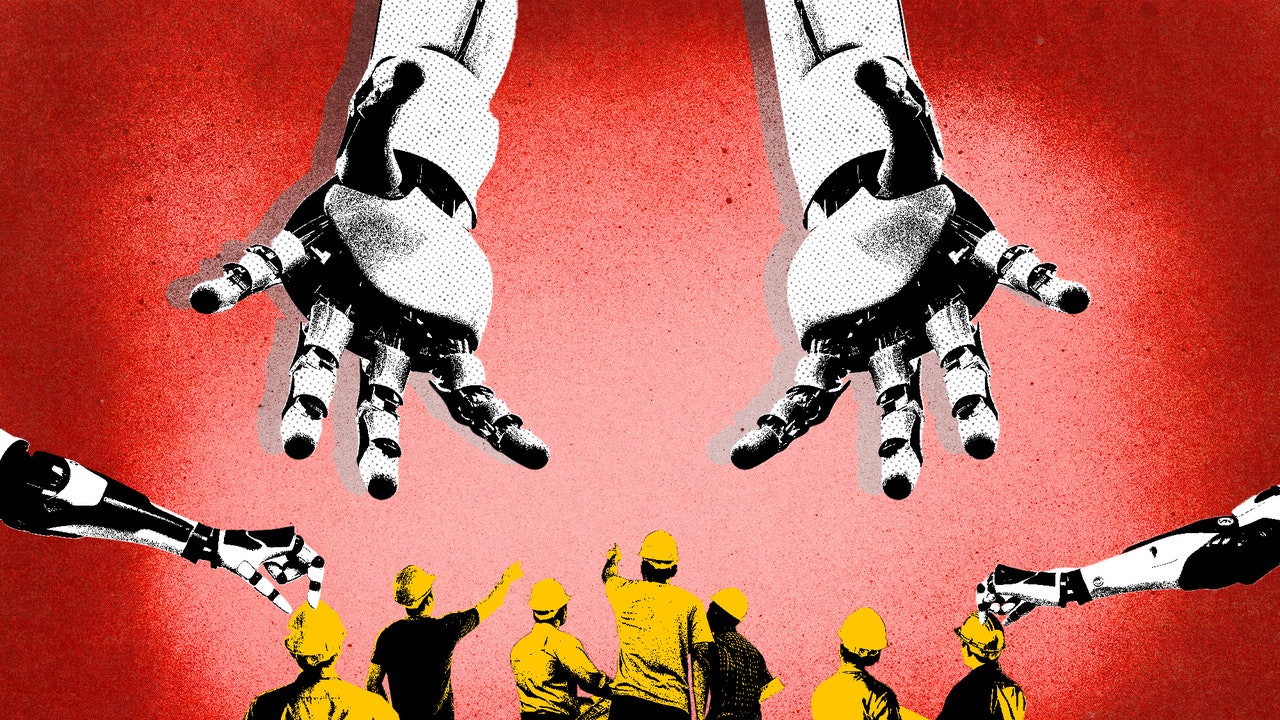
For decades we’ve been warned that artificial intelligence is coming for our jobs. Sci-fi books and movies going all the way back to Kurt Vonnegut’s Player Piano portray a world where workers have been replaced by machines (or in some instances, just one machine). More recently, these ideas have moved from the annals of novels into the predictive economic papers of governments and consulting firms. In 2016, the Obama administration authored a report warning that the robots were coming, and that millions of Americans could soon be out of a job. In 2021, McKinsey predicted that algorithms and androids would vaporize 45 million jobs by 2030. And the Brookings Institute prophesied in a 2019 study that 52 million U.S. jobs would be affected by algorithms by 2030.
While no one can agree on exactly when the robots will take over, or how many jobs they will swallow up, the assumption has generally been that garbage collectors, bus drivers, and interstate truckers will be among the first to lose their livelihoods to A.I. Lately, however, it’s starting to look as if people like me—creatives—are even more imminently in danger. Over the past few months, new advancements in A.I. have made it clear that writers, illustrators, photographers, journalists, and novelists could soon be driven from the workforce and replaced by high-tech player pianos.
Don’t believe me? Just read the opening of this short story:
That paragraph wasn’t written by an MFA, or a sci-fi author, but rather by a new online machine-learning platform called Sudowrite, which is billed as a tool to help with the creative-writing process. For the above paragraph, I wrote the first sentence—about the loud clicking noise—and the A.I. wrote the rest. The technology works using a platform from OpenAI, an artificial-intelligence research laboratory with a billion dollars in funding from Microsoft, and investments from Elon Musk. More specifically, it’s built on GPT-3, a component of the company that focuses on text. GPT-3 scrapes billions of words and learns from them using natural-language processing. Then, it gets to work. After reading Sudowrite’s first draft, I said I wanted more description. So the A.I. suggested we add some “smells,” and revised the text accordingly in a few seconds. While the story isn’t Pulitzer Prize–worthy (yet), I was startled by the algorithm’s ability to turn phrases like “the tall grass swayed in an unseen breeze” and “its hushed breathing carried an echo of a crackling campfire.”
Advancements in writing are just the beginning. Another OpenAI tool currently being likened to magic by people in Silicon Valley is a visual platform called Dall-E. Using a version of GPT-3, Dall-E can create truly astounding renditions of artworks and illustrations. Like GPT-3, Dall-E has learned how to draw and paint by combing through billions of images. It’s now conversant in styles, objects, shapes—you name it. Just type a set of commands into Dall-E, and it will nearly instantaneously generate an image to illustrate them. For example, if you ask it to draw “an astronaut riding a horse in a photorealistic style,” it will create several options to choose from. If you tell it to instead make a “pencil drawing,” it will render new images in that style. You can order up stained glass, spray paint, Play-Doh, cave drawings, or paintings in the style of Monet. You can replace the astronaut with a teddy bear. A dog. Elon Musk. Or have the horse riding a horse. The possibilities are endless, and the end results are terrifyingly impressive—so much so that one of the top questions associated with a Google search of the platform is “Is Dall-E fake?”
These new technologies have scrambled our assumptions about creativity and computers. Philosophers have long believed that computers would never be able to create “art” because machines don’t have emotions. They don’t feel pain or joy; therefore, they can’t express those feelings in a creative way. As it turns out, however, computers don’t need feelings to make art. They can simply copy what humans have already made. “It’s not so much that the computer is ‘thinking’ like a human artist,” said Hod Lipson, a scientist who specializes in artificial intelligence and robotics at Columbia University. “It’s more that they are producing output based on what they have seen.”
Now, I have to be honest. I didn’t interview Hod Lipson. I didn’t even search the web for his quote. Instead, I asked another GPT-3-powered program called ShortlyAI to write a post for me about algorithms replacing journalists and artists. The algorithm found Lipson’s work, read his research papers, videos, talks, and interviews, and selected this quote as the most compelling to add to this piece. When I reached out to Lipson to see if this was something he said, and that the A.I. hadn’t just made it up, Lipson said it was accurate, but noted that a more accurate point would be to say that “it’s more that, like a human, the computer too is producing output based on what it has experienced.”
Here’s what else the A.I. wrote:
